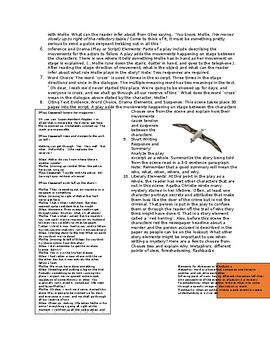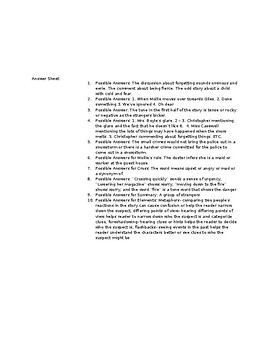The Mousetrap A 1, S 2 Excerpt 1 by Agatha Christie Close Reading Drama Analysis
- Word Document File
Description
This activity examines an excerpt of "The Mousetrap" by Agatha Christie, a whodunnit mystery play close reading analysis. It is also known as "Three Blind Mice" in story form. This excerpt is from Act 1, Scene 2 of the play. It focuses on the phone call to the snowed-in group staying in the hotel about the police coming there through the weather to see about a murder that was committed.
The play pairs well with a "Whodunnit" themed set of poems, short stories, plays, novels, as well as other short stories with a mystery to solve such as "Strange Jest" by Agatha Christie. This pairs well with a Mystery or judge and jury theme using other Agatha Christie stories. For a longer work, "And Then There Were None" and "Murder on the Orient Express" allows an ongoing "trial" analysis as a debate piece for the classroom to do throughout the reading of the text.
Other mystery or whodunnit poems and short stories:
8-12
The Mousetrap Act 1, Scene 2 Excerpt 2 by Agatha Christie
The Mousetrap Act 2, Scene 1 Excerpt 3 by Agatha Christie
Strange Jest by Agatha Christie
Four and Twenty Blackbirds by Agatha Christie
6-12
Poems:




